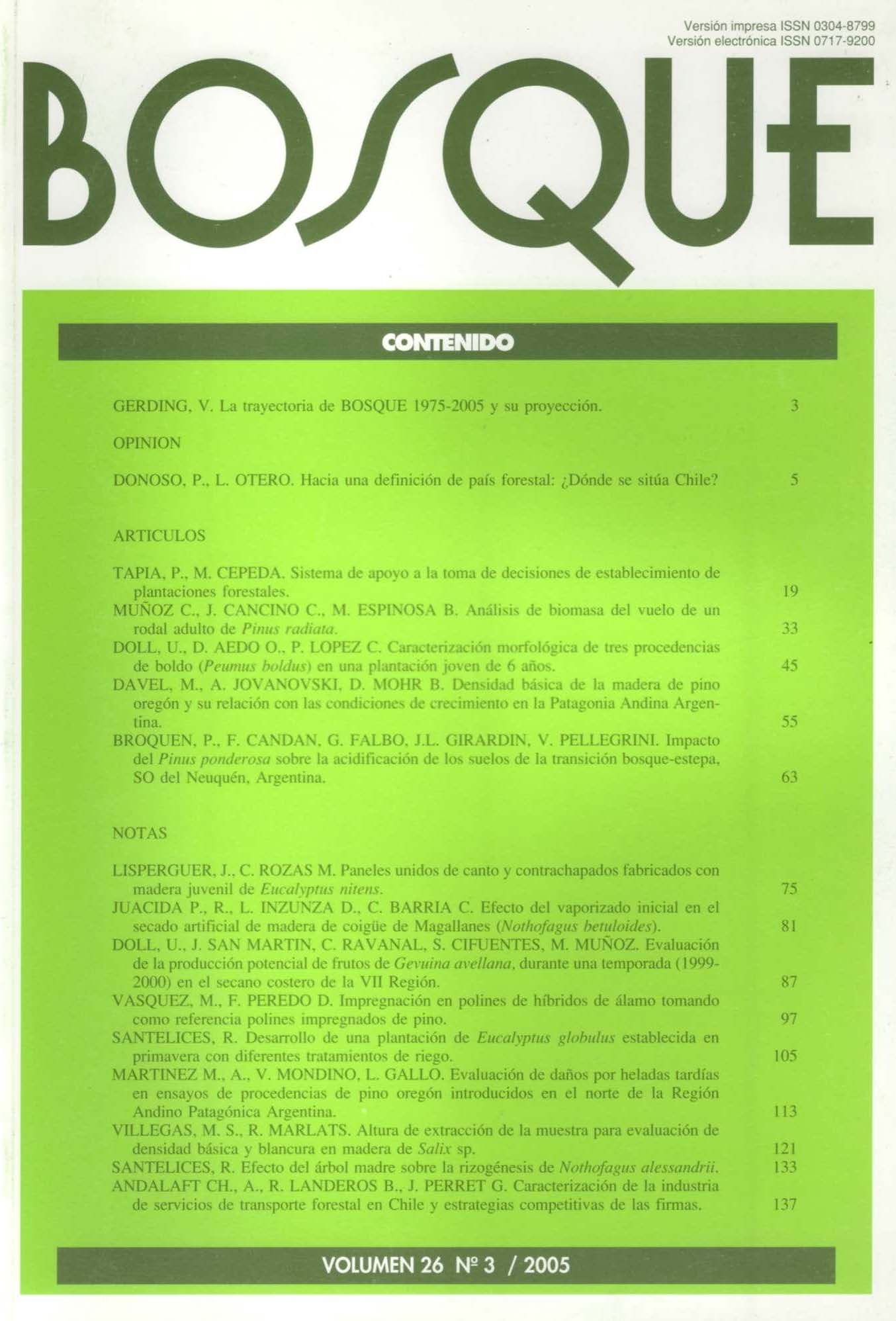Main Article Content
Dec 30, 2005
Abstract
The effect of irrigation on the development of a Eucalyptus globulus Labill plantation in spring was evaluated. The influence of irrigating at the time of plantation with two and three liters of water and again during the critical period with zero to two liters of water was analyzed using a 2*2 factorial design. The study was carried out in the coastal zone of central Chile. The seedlings were planted during the Spring of 1993 (October). During this period the soil temperature reached 13.5ºC at 10 cm depth. The critical period was defined as the time of highest aridity levels (January). Two months prior to planting a furrow 5 cm deep and 60 cm wide was made over the plantation row with an animal drawn plough to control weeds. The seedlings used were 1/0, produced in containers with an average root collar diameter of 0.14 cm and an average height of 12 cm. Before planting, a hydrogel was incorporated into the soil in a water based solution at a rate of 1 gram per plant. The seedlings were also fertilized with N, P and K, and a mulch was placed around every seedling. The results obtained after one rotation indicate plants should be irrigated with two liters of water at the time of planting. Average seedling survival after 8 years was 70%. Mean tree size was 16.2 cm for diameter (DBH) and 19.7 m in height, with a 28 m3ha-1 per year increase in volume.


